In cricket, with the onset of shorter formats like T20s, scoring runs quickly has become very important and fairly easy. Batsmen can go big and hit the ball out of the park whenever they get the opportunity. But this is usually not the case in test matches and longer formats of the game, where you cannot play risky strokes and have to play safe and bat long. The out-swinging and seaming deliveries are lethal, and even a slight misjudgement can take the edge of the bat and land in the wicketkeeper's gloves. Most of these deliveries are bowled at a good length outside the off stump, where making the judgement of whether to play the shot or not is difficult. But there’s one shot that exactly to counter such a situation and help you come out on top and even play such deliveries with confidence, and that is the backfoot drive in cricket.
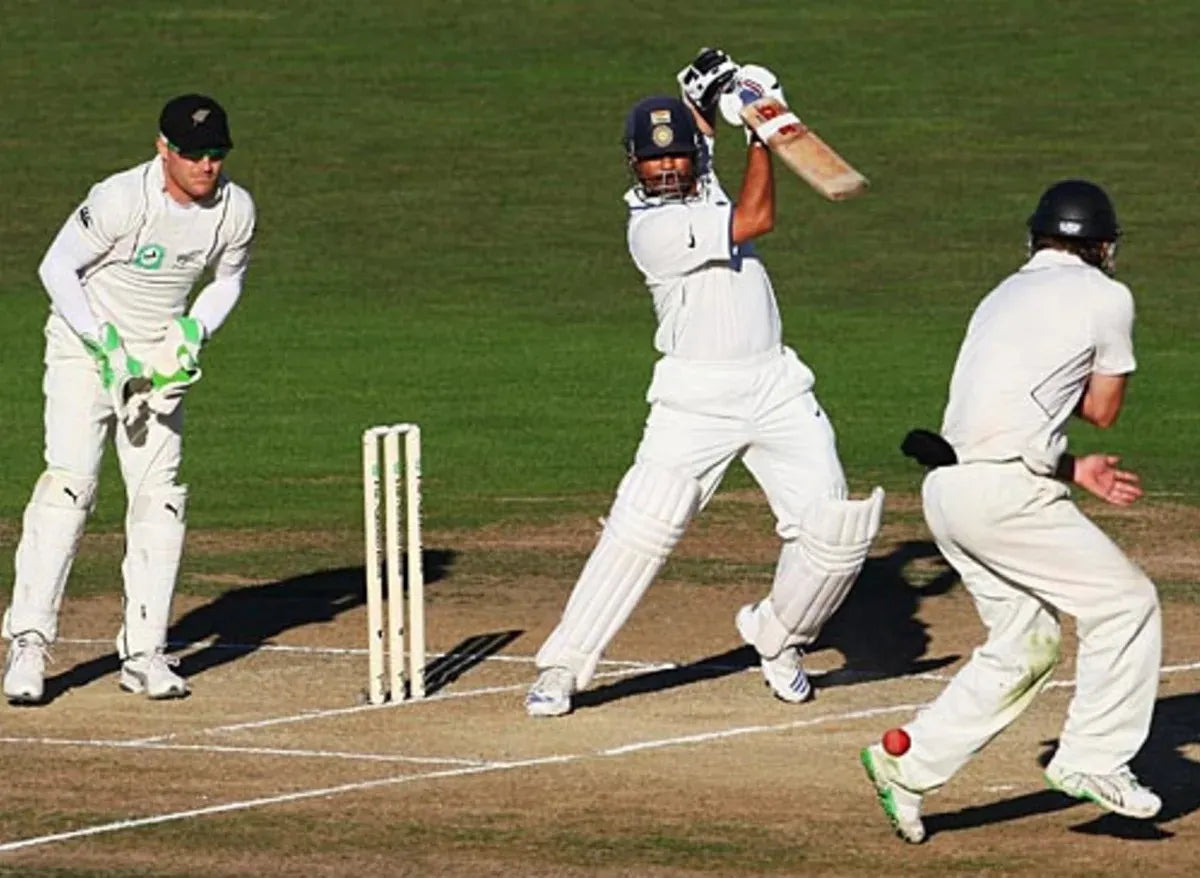
Credit: ESPN Cricinfo
In this article by ZAP, let’s learn how to play the backfoot drive in cricket.
What is the backfoot drive cricket shot?
The backfoot drive is a classical cricket shot that exudes grace and power. The stroke is best used when the cricket ball is pitched on a shorter length (further away from the batter) or when the pitch has a lot of bounce. Now, there are three shots that you can play against these deliveries; one is the square cut, which is a safe but aggressive approach; you can go for the pull shot on the leg side, which would be risky but rewarding; or you can go for the backfoot drive, which will be the safest stroke to play. The shot can also be called a backfoot punch, as you’re just showing the ball's direction rather than hitting it with power. It involves hitting the ball towards the cover and point fielding regions with the front leg anchored and transferring your weight onto the back foot. This shot requires impeccable timing and footwork and is one of the most technically difficult strokes to play. But here are some batting tips and techniques that’ll help you play the stroke confidently:
How do you play the backfoot drive cricket shot?
You can score runs in the region of point and cover to a delivery that is just short of a length. You'll need to move your feet quickly and with good balance, just like with the other backfoot shots. However, the back foot drive depends more on placement and timing than it does on power, unlike the hook shot or square cut.
Perfecting Your Stance:
The batting stance is the foundation of any cricket shot. For the backfoot drive, maintain a side-on stance with your feet shoulder-width apart. This stance allows you to pivot and transfer your weight effectively.

Credit: BBC News
Footwork and Trigger Movement:
As the fast bowler is taking his run-up towards the pitch, move your backfoot a bit towards the off stump and adjust your front foot accordingly. This is called the trigger movement and will help you to play the stroke and get into shape well.
To play this shot, you need to shift your weight onto the backfoot to generate power quickly and use your front foot to provide a stable base and to balance all your weight. As the bowler delivers the ball, shift your weight onto the back foot and align yourself with the line of the ball.
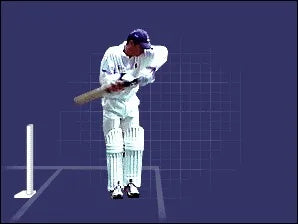
Credit: BBC News
Grip and Positioning:
Hold your bat in a normal grip, but remember not to hold it very tight, as you need some flexibility of your wrists to generate power and give the ball the right direction. Also, get a pair of gloves that will help your wrists stay flexible and keep comfort at the highest priority.
Batswing and Point of Contact:
You should play the shot with a straight bat to have constant control over the stroke. Make sure your head is over the ball when you make contact to avoid the ball scooping the stroke straight into the hands of the cover fielder. Try to get on top of the bounce of the ball and play the stroke with a high elbow to keep the ball on the ground. The upper hand gives your stroke the direction, and you generate power with the backhand. Take care to finish in a high position by keeping the bat and hands on the shot's line. Also, the better the ping of the cricket bat, the stronger the shot and the more it travels, get get a bat that can take you game to the next level.

Credit: BBC News
Common Mistakes to Avoid:
Shot Selection:
As we talked earlier, there are three strokes that you can play to deliveries short and outside off stump. You can play the square cut, the pull or the backfoot drive. You need to decide whether you want to go safe or risky according to the match format and the situation.
Not Getting on top of the bounce:
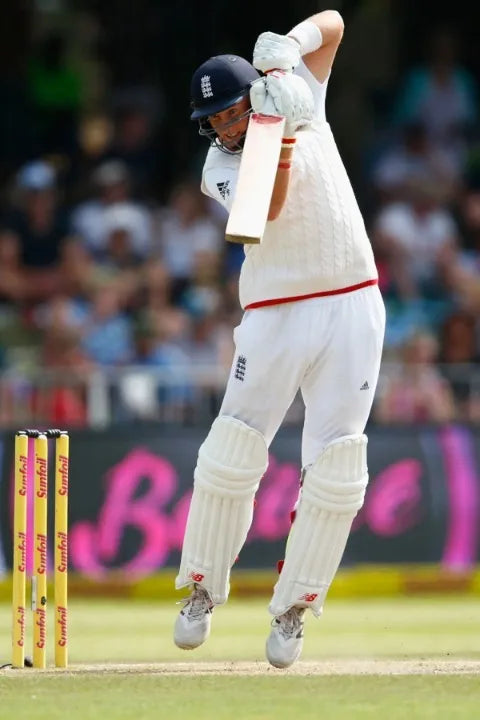
Credit: ESPN Cricinfo
To play any stroke, you need to make sure you don’t mistime it and don’t play it directly in the handle of the fielder. Because the shot involves so many technicalities, there’s a huge chance you play it wrong and get out. Of all the things that can go wrong, not getting on top of the bounce happens most often. If you don’t cancel the rising bounce and control the shot to play it along the ground, you will lose your wicket. So remember to stay tall, get on your toes to gain that extra height and keep the shot under your control.
Playing the ball way away from the body:
Playing the shot when the ball is too far from the body is as dangerous as playing the wrong shot. If it is too far, you will not have any control over your stroke. So, always try to get in line with the delivery, or you’d be better off playing a square cut.
Drills to Improve Your Backfoot Drive
Side Arm Throwdowns:

Credit: The Times of India
Sidearm throwdowns are the best way to practice against and get better at any cricket shot. The ball, when released from the side arm thrower, has extreme pace and gets extra bounce, and this can emulate real-life match scenarios while practising the Backfoot drive cricket shot. It will help you judge the line and length of the ball quickly and practice and improve upon your footwork.
Tennis Ball Drills:
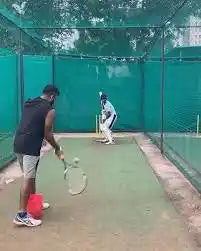
Tennis ball drills are similar to side arm throwdowns in terms of pace. But there’s a slight difference in the trajectory of the ball, so that’s a way you can train for them. Ask your cricket coach or a friend to hit a tennis ball directly at you with a tennis racket. This will be quick and will help you get better with footwork.
FAQ:
Which batsmen played the best backfoot drives?
Technically astute batsmen like Sachin Tendulkar, Steve Smith, Joe Root, Rahul Dravid are some examples who play this stroke the best.
What are some shots that you can play on the off side?
You can play the cover drive if the ball is pitched higher up. It the ball gets pitched a bit shorter, and wide, you can go for the backfoot drive or the square cut.
Can I use the backfoot drive to counter spin bowlers?
While the stroke is more commonly used against fast bowlers, it can be effective against spin bowling if the delivery is short and offers room for the shot.
Now that you've read about the Backfoot Drive Cricket Shot, here are some more articles we recommend reading that will help you take you game to the next level.
Straight Drive | Sweep Shot | Wicket Keeping Tips and Techniques | Fielding Techniques


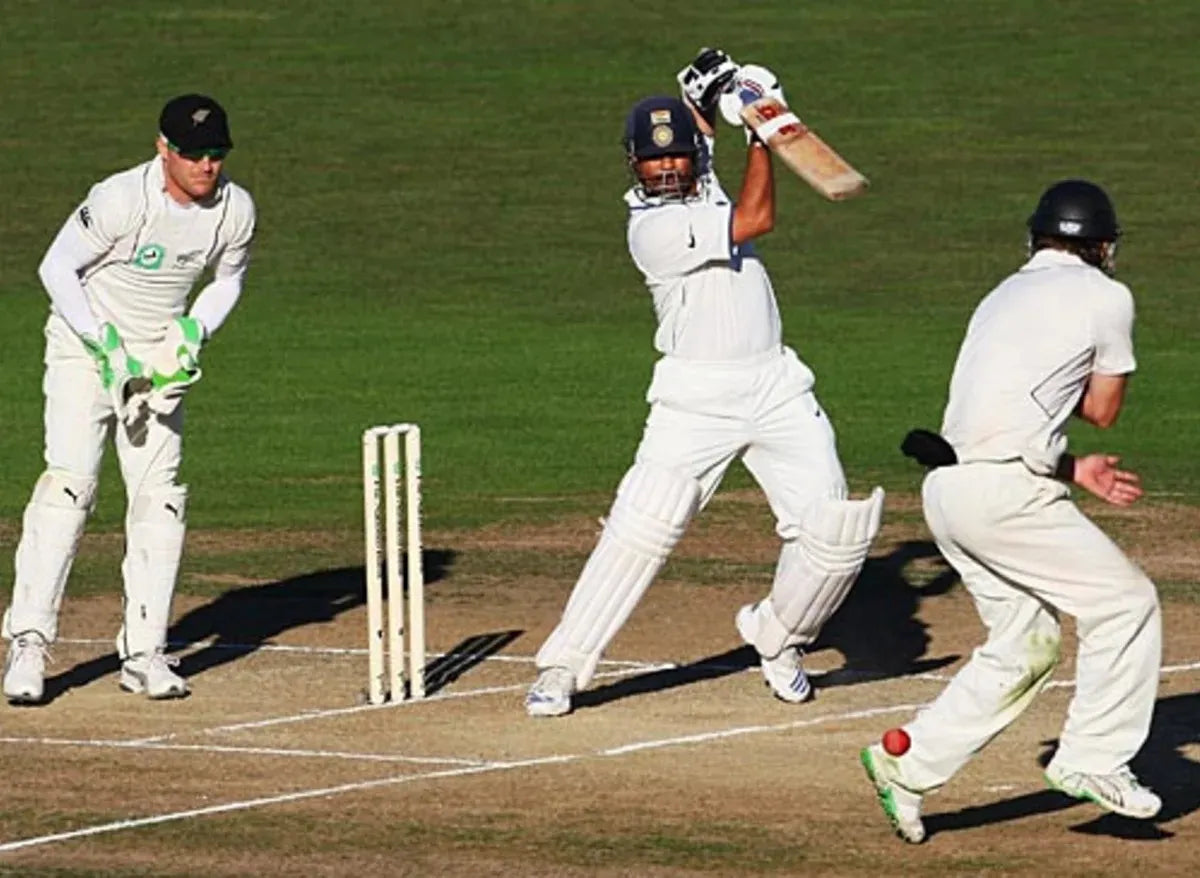
Share:
The Story of the Kolkata Knight Riders (KKR) in IPL
Swing Bowling in Cricket: Inswing, Outswing and Reverse Swing Techniques